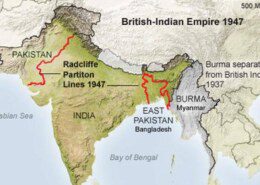Roadmap for Answer Writing: 1. Introduction Briefly introduce the historical backdrop of the Quit India Movement, including the start of World War II and its effects on British India. Mention the broad sentiment of disillusionment among Indian leaders and the public with British ...
Netaji Subhash Chandra Bose was a determined leader in India's fight for freedom from British rule. Bose had a different thinking than other prominent leaders. He believed that battles cannot be eventually won only by non-violent means, and therefore armed struggle was necessary to achieve freedom.Read more
Netaji Subhash Chandra Bose was a determined leader in India’s fight for freedom from British rule. Bose had a different thinking than other prominent leaders. He believed that battles cannot be eventually won only by non-violent means, and therefore armed struggle was necessary to achieve freedom.
Bose became a leader in the Indian National Congress and later formed the Forward Bloc, which aimed to unite all anti-British forces. During world war 2 he sought support from Germany and Japan, believing that Britain’s enemies can become India’s allies in the freedom struggle.
In 1943, Bose took charge of the Indian National Army, which comprised of soldiers who had been prisoners of war. He led the INA in several battles against the British. Many Indians were inspired to join the cause by his call, “Give me blood and I shall give you freedom”.
Despite the defeat of the Indian National Congress, his efforts had a significant impact among people of India and on the British Authority. Indians were reunited, as the nationalist sentiments heightened within them and the British authority was pressurized. People of India started to show their willingness to fight for freedom of their country, by any means possible. These incidents contributed significantly to the Independence of India in 1947.
See less

Model Answer The launch of the Quit India Movement in August 1942 became inevitable despite the challenging circumstances due to several key factors: 1. Failure of the Cripps Mission The Cripps Mission, sent by the British government to negotiate with Indian leaders, failed to provide a satisfactoryRead more
Model Answer
The launch of the Quit India Movement in August 1942 became inevitable despite the challenging circumstances due to several key factors:
1. Failure of the Cripps Mission
The Cripps Mission, sent by the British government to negotiate with Indian leaders, failed to provide a satisfactory solution for Indian self-governance. The offer was seen as an empty gesture, leading to disillusionment among leaders like Gandhi and Nehru, who had initially supported the war effort against fascism but felt betrayed by the lack of genuine concessions.
2. Rising Discontent and Economic Hardship
The Indian populace was experiencing significant hardships due to rising prices and wartime shortages. The government’s heavy-handed actions, such as seizing boats in Bengal and Orissa to prevent Japanese use, further fueled public anger and dissatisfaction with British rule.
3. News of Allied Reverses
Reports of British military setbacks, including the withdrawal of troops from Southeast Asia, created a sense of impending British collapse. This speculation heightened the urgency for a movement that could galvanize public sentiment against colonial rule.
4. Japanese Aggression
As Japanese forces advanced in Southeast Asia, there was widespread fear that they might not face resistance from demoralized Indian masses. Leaders believed that a strong movement was necessary to boost morale and prepare for potential invasions.
5. Erosion of Faith in British Rule
The stability of British rule was increasingly questioned, evidenced by a run on banks and a withdrawal of deposits. This growing skepticism among the populace indicated a readiness for a decisive movement against colonial authority.
6. Impatience Among Leadership
The British evacuation of white residents from Malaya and Burma, while leaving Indian subjects vulnerable, raised alarms among Indian leaders about the potential for similar treatment in India. This sense of betrayal contributed to the urgency for action.
In summary, the combination of failed negotiations, economic distress, military setbacks, and a loss of faith in British authority created a perfect storm that made the Quit India Movement not only necessary but inevitable.
See less